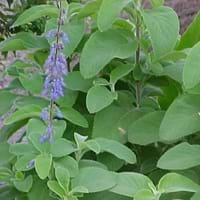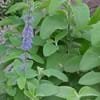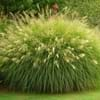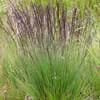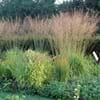Life Span
Perennial
Perennial
Type
Flowering Plants, Herbs
Perennial
Origin
Not Available
Hybrid origin
Types
Not Available
Victoria Rhubarb
Colorado Red Rhubarb
Turkish Rhubarb
Number of Varieties
Not Available
Habitat
Not Available
gardens, Grassland, Humid climates, Tropical regions, Urban areas
USDA Hardiness Zone
Not Available
5-8
AHS Heat Zone
Not Available
8-3
Sunset Zone
Not Available
2b, 3a, 3b, 4, 5, 6, 7, 14, 15, 16, 17
Habit
Clump-Forming
Clump-Forming
Flower Color
Lavender
Light Pink
Flower Color Modifier
Bicolor
Not Available
Fruit Color
Not Available
Burgundy
Leaf Color in Spring
Light Green
Green, Dark Red
Leaf Color in Summer
Green
Green, Dark Red
Leaf Color in Fall
Green
Green, Dark Red
Leaf Color in Winter
Green
Light Green
Leaf Shape
Toothed
Compound
Plant Season
Summer, Fall
Spring, Summer, Fall
Sunlight
Partial shade, Partial Sun
Full Sun, Partial Sun
Type of Soil
Loam, Moist
Clay, Loam
The pH of Soil
Neutral, Slightly Alkaline
Acidic, Neutral, Alkaline
Soil Drainage
Well drained
Average
Bloom Time
Early Summer, Late Summer
Summer, Late Summer
Tolerances
Not Available
Drought
Where to Plant?
Ground
Ground
How to Plant?
Cuttings
Stem Planting
Plant Maintenance
Medium
Medium
Watering Requirements
Do not water excessively
Do Not over Water, Requires regular watering, Use Mulches to help prevent water loss during hot and windy weather, Water Deeply
In Summer
Ample Water
Lots of watering
In Spring
Average Water
Moderate
In Winter
Moderate
Average Water
Soil pH
Neutral, Slightly Alkaline
Acidic, Neutral, Alkaline
Soil Type
Loam, Moist
Clay, Loam
Soil Drainage Capacity
Damp
Average
Sun Exposure
Partial shade, Partial Sun
Full Sun, Partial Sun
Pruning
Remove damaged leaves, Remove dead leaves
Remove damaged leaves, Remove dead branches, Remove dead leaves
Fertilizers
10-10-10 diluted liquid fertilizer, All-Purpose Liquid Fertilizer
All-Purpose Liquid Fertilizer
Pests and Diseases
Leaf spot, Root knot nematode, Root rot, Verticillium Wilt
Red blotch
Plant Tolerance
Not Available
Drought
Flower Petal Number
Single
Not Available
Foliage Texture
Fine
Coarse
Foliage Sheen
Matte
Glossy
Attracts
Not Available
Not Available
Allergy
Cough, flushing of face, Low blood pressure, restlessness, stinging, Throat itching, tremor
Skin irritation
Aesthetic Uses
Showy Purposes, Used for making hedges
Showy Purposes
Beauty Benefits
No Beauty Benefits
Not Available
Environmental Uses
Air purification
Air purification
Medicinal Uses
convulsions, Heart problems, painful urination, spasmodic pain
Not Available
Part of Plant Used
Leaves, Root, Seeds
Whole plant
Other Uses
Employed in herbal medicine
Culinary use, Used as Ornamental plant
Used As Indoor Plant
No
No
Used As Outdoor Plant
Yes
Yes
Garden Design
Container, Mixed Border
Feature Plant, Mixed Border
Botanical Name
Plectranthus barbatus
RHEUM 'Ace of Hearts'
Common Name
Coleus forskohlii, Indian coleus
Ace of Hearts Ornamental Rhubarb, Ornamental Rhubarb
In Hindi
पत्थरचूर
सजावटी प्रकार का फल
In German
Harfensträucher
Ornamental Rhabarber
In French
Coléus à forskoline, Coléus de l'Inde
rhubarbe ornementale
In Spanish
Coleus forskohlii
Ornamental de ruibarbo
In Greek
Coleus Forskohlii
καλλωπιστικά Ραβέντι
In Portuguese
Boldo-de-jardim, Boldo-da-terra
ornamental ruibarbo
In Polish
Coleus Forskohlii
ozdobne Rabarbar
In Latin
Coleus Forskohlii
decentius Rhubarb
Phylum
Magnoliophyta
Tracheophyta
Class
Magnoliopsida
Not Available
Order
Lamiales
Caryophyllales
Family
Lamiaceae
Polygonaceae
Clade
Angiosperms, Asterids, Eudicots
Angiosperms, Core eudicots, Eudicots
Tribe
Not Available
Not Available
Subfamily
Not Available
Not Available
Number of Species
Not Available
Importance of Coleus Forskohlii and Ornamental Rhubarb
Want to have the most appropriate plant for your garden? You might want to know the importance of Coleus Forskohlii and Ornamental Rhubarb. Basically, these two plants vary in many aspects. Compare Coleus Forskohlii and Ornamental Rhubarb as they differ in many characteristics such as their life, care, benefits, facts, etc. Every gardener must at least have the slightest clue about the plants he wants to plant in his garden. Compare their benefits, which differ in many ways like facts and uses. The medicinal use of Coleus Forskohlii is convulsions, Heart problems, painful urination and spasmodic pain whereas of Ornamental Rhubarb is Not Available. Coleus Forskohlii has beauty benefits as follows: No Beauty Benefits while Ornamental Rhubarb has beauty benefits as follows: No Beauty Benefits.
Compare Facts of Coleus Forskohlii vs Ornamental Rhubarb
How to choose the best garden plant for your garden depending upon its facts? Here garden plant comparison will help you to solve this query. Compare the facts of Coleus Forskohlii vs Ornamental Rhubarb and know which one to choose. As garden plants have benefits and other uses, allergy is also a major drawback of plants for some people. Allergic reactions of Coleus Forskohlii are Cough, flushing of face, Low blood pressure, restlessness, stinging, Throat itching and tremor whereas of Ornamental Rhubarb have Skin irritation respectively. Having a fruit bearing plant in your garden can be a plus point of your garden. Coleus Forskohlii has no showy fruits and Ornamental Rhubarb has showy fruits. Also Coleus Forskohlii is flowering and Ornamental Rhubarb is not flowering . You can compare Coleus Forskohlii and Ornamental Rhubarb facts and facts of other plants too.
